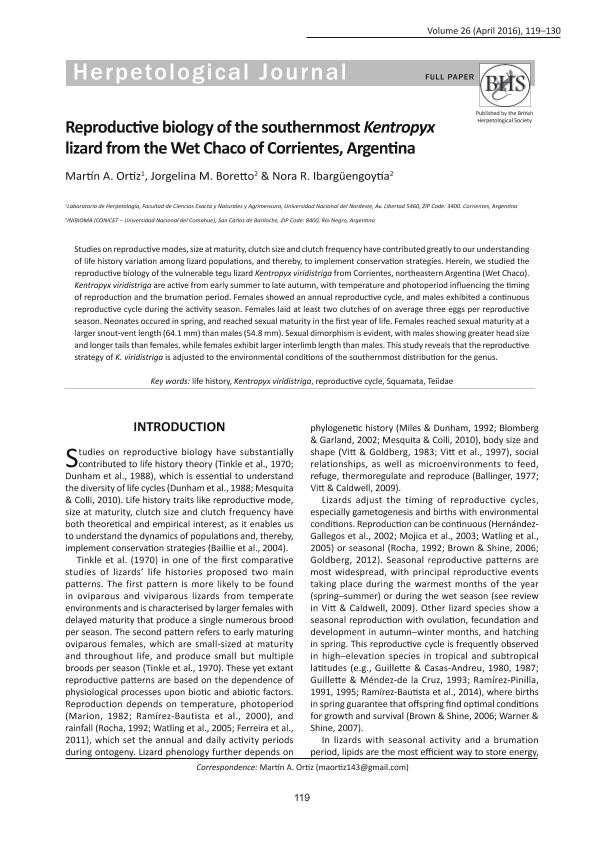Artículo
Reproductive biology of the southernmost Kentropyx lizard from the Wet Chaco of Corrientes, Argentina
Fecha de publicación:
04/2016
Editorial:
British Herpetological Society
Revista:
Herpetological Journal
ISSN:
0268-0130
Idioma:
Inglés
Tipo de recurso:
Artículo publicado
Clasificación temática:
Resumen
Studies on lizards reproduction, determining the reproductive mode, size at maturity, clutch size, and clutch frequency, have contributed greatly to understand factors influencing life history variation among populations, and thereby, to implement conservation strategies. Herein, we studied the reproductive biology of the vulnerable tegu lizard Kentropyx viridistriga from Corrientes, northeastern Argentina (Wet Chaco). We found that temperature and photoperiod influence the timing of reproduction and the brumation period of K. viridistriga which are active from early summer to late autumn. Females showed a seasonal and annual reproductive cycle and males exhibited a continuous reproductive cycle during the activity season. Females lay at least two clutches of on average three eggs per reproductive season. Neonates occur in spring, and reach sexual maturity in the first year of life. Females reached sexual maturity at a larger snout-vent length (64.1 mm) than males (54.8 mm). Sexual dimorphism is evident, with males showing greater head size and longer tails than females, while females exhibit larger interlimb length than males. This study reveals that the reproductive strategy of K. viridistriga is adjusted to the environmental conditions of the southernmost distribution for the genus.
Palabras clave:
Reproductive Cycle
,
Life History
,
Squamata, Teiidae
,
Kentropyx Viridistriga
Archivos asociados
Licencia
Identificadores
Colecciones
Articulos(INIBIOMA)
Articulos de INST. DE INVEST.EN BIODIVERSIDAD Y MEDIOAMBIENTE
Articulos de INST. DE INVEST.EN BIODIVERSIDAD Y MEDIOAMBIENTE
Citación
Ortíz, Martín; Boretto, Jorgelina Mariela; Ibarguengoytía, Nora; Reproductive biology of the southernmost Kentropyx lizard from the Wet Chaco of Corrientes, Argentina; British Herpetological Society; Herpetological Journal; 26; 4-2016; 119-130
Compartir




